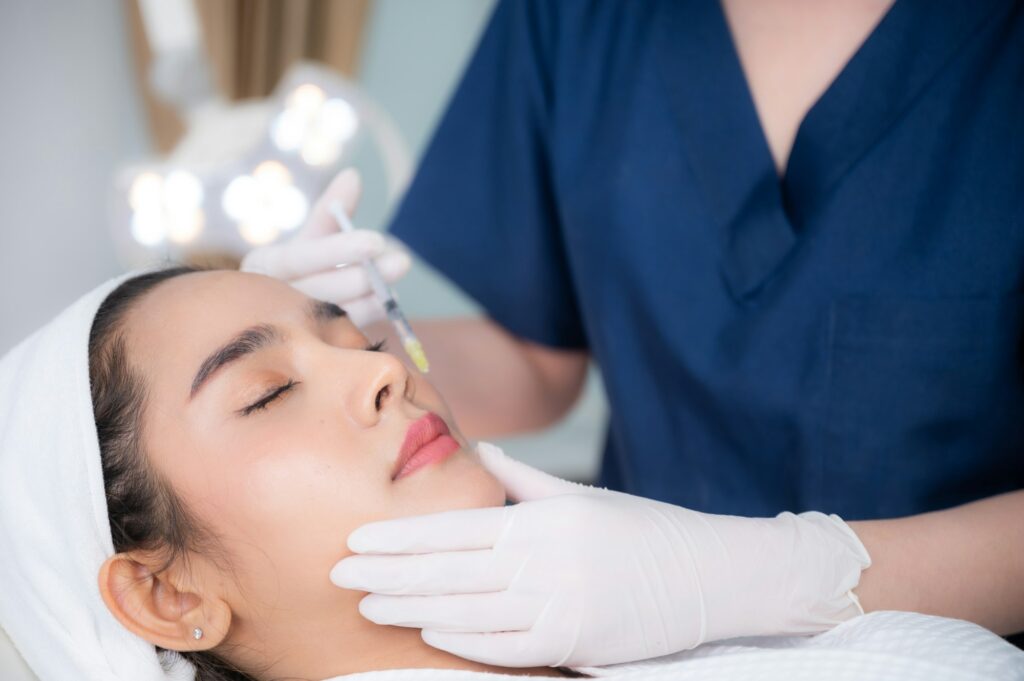Malignant Melanoma, also simply called melanoma, is the most serious type of skin cancer. It arises from melanocytes, the cells in your skin that produce melanin, the pigment that gives your skin its color. Unlike basal and squamous cell carcinomas, melanoma can spread to other parts of the body if not caught early.
Here's a breakdown of what you need to know about melanoma:
Development: Melanoma develops when melanocytes mutate and grow uncontrollably. Sun exposure is a major risk factor, but unlike other skin cancers, melanoma can also occur in areas with no sun exposure.
Types: There are several types of melanoma, but the most common ones include:
• Superficial spreading melanoma: This is the most common type, often appearing as a flat or slightly raised patch that changes color or shape.
• Nodular melanoma: This appears as a dark bump that grows quickly.
• Lentigo melanoma: This type is more common in people with darker skin tones and usually develops in areas that don't get much sun exposure.
Acral lentiginous melanoma: This type develops on the palms, soles, or nail beds.
Warning Signs (The ABCDE Rule): Early detection is critical. Be on the lookout for changes in your moles or unusual spots using the ABCDE rule:
• Asymmetry: One half of the mole unlike the other.
• Border irregularity: Ragged or blurred edges.
Color: Variations of brown, black, or red within the same mole.
• Diameter: Larger than a quarter-inch (6mm) in diameter.
• Evolving: Changing in size, shape, or color over time.
Melanoma is highly treatable when caught early. If you notice any suspicious changes in your skin, see a dermatology provider for a checkup. Early diagnosis allows for successful removal of the melanoma with minimal chance of it spreading.
The most common treatment for melanoma is surgical removal of the cancerous tissue. In some cases, depending on the stage of the cancer, additional treatments like lymph node removal, immunotherapy, radiation therapy, or targeted therapy might be recommended.
Sun protection is vital for preventing melanoma. Here are some key sun safety practices:
• Seek shade: Especially during peak sun hours (10 am to 4 pm).
• Sun-protective clothing: Cover up with long sleeves, pants, and a wide-brimmed hat.
• Sunscreen: Apply broad-spectrum SPF 30+ sunscreen generously and reapply every two hours, or more often if sweating or swimming.
• Sunglasses: Protect your eyes from UV rays with sunglasses that block UVA and UVB rays.
In addition to sun safety, performing regular self-skin exams is crucial for early detection of melanoma. Examine your entire skin for any changes in moles or unusual spots. If you notice anything concerning, consult a dermatology provider right away.
Remember, early detection is key for successful melanoma treatment. By following sun safety practices, performing self-skin exams, and getting regular skin cancer screenings, you can significantly reduce your risk of melanoma.
I found Tirsa over four years ago and I’m so thankful I did. Her warm and sincere personality, along with her knowledge and experience will definitely put you at ease the very first time you meet her. She listens to your concerns and explains the various options. She does not overdo any of the procedures. She doesn’t try to sell products or services that you don’t need. She is a natural at what she does. Thank you, Tirsa, for taking great care of me always, I would never consider going anywhere else!
Tirsa Quartullo is a great Nurse Practitioner for Dermatology. She was able to make me feel comfortable even though I was there for an embarrassing skin condition. Tirsa's years of expertise allowed her to quickly diagnose the issue and prepare a plan of treatment that was not only effective but affordable and easy to maintain. It is quite freeing to know that an unpleasant time in my life will be over soon. Thank you Tirsa!
Tirsa Quartullo is the only one I trust because she does a beautiful job naturally. She pays close attention to detail and always does high-quality work. Every time I see her, I am impressed by how she creates amazing, natural-looking results. Her skill and professionalism make her the best choice for anyone wanting great work.
PHP Dermatology is wonderful! Tirsa is an Amazing provider! She is so knowledgeable and kind. Her talent, skill and expertise in Dermatology is evident as she talks with you and makes recommendations. Whether medical or cosmetic, she takes the time with you to make sure you feel heard, well cared for and beautiful!

PHP Dermatology provides an array of resources for visitors who are seeking to enhance and improve their skin health.

Get the latest discounts and news when you sign up for our newsletter.
I have been a patient of Tirsa’s for about 16 yrs now and she has always gone above and beyond with any service she has provided. She is professional, kind, clean, and a master at her craft. Wherever she goes, I will follow for my dermatology/cosmetic needs. She is also stunning inside and out. Ladies and gents, make an appt!